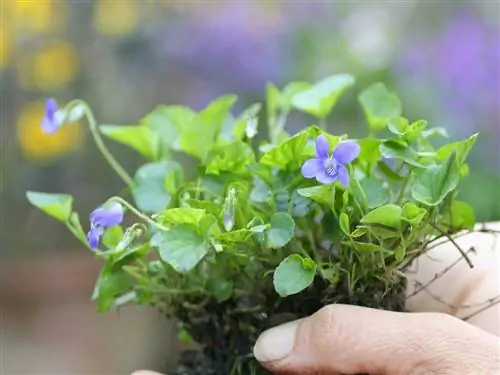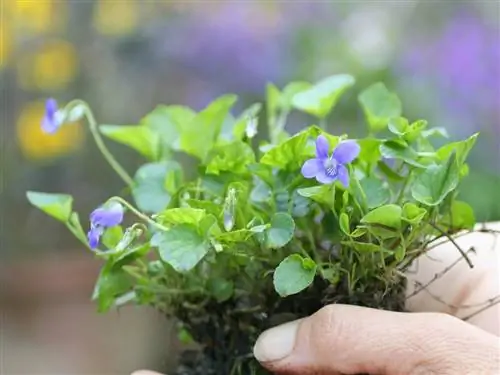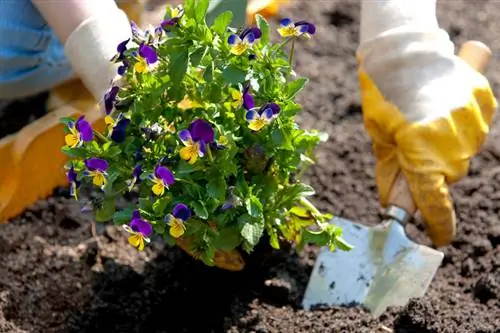- Author admin [email protected].
- Public 2023-12-16 16:46.
- Last modified 2025-01-23 11:21.
In nature, the fragrant violet with its delicate flowers greets walkers mainly in March and April together with the other first signs of spring. In a suitable location with appropriate conditions such as nutrient-rich soil, the scented violet can also be cultivated as a perennial garden plant.

How do you plant scented violets correctly?
To successfully plant scented violets, choose a partially shaded location with nutrient-rich soil. Plant young plants or cuttings from spring to fall and sow seeds in the ground in fall. A good supply of water promotes plant growth.
This is what you need to consider when planting scented violets
In contrast to many other types of violets such as pansies, the much more discreetly blooming scented violets exude an almost beguiling scent, which is also reflected in the botanical name “Viola odorata”. Since the use of edible flowers has become more and more fashionable in recent years, growing them in your own garden can serve other purposes in addition to scent and decorative appearance. Basically, fragrant violets multiply steadily in a suitable location, but you need patience for a few years before they spread over a larger area.
A suitable location is very important
In nature, scented violets grow primarily in the following locations:
- on the side of the road
- on embankments and edges of bushes
- on the edge of settlements (wilding of deliberately planted stocks)
While other types of violets are also suitable for cultivation in balcony boxes or on the terrace, the fragrant violet is more of a classic plant for outdoor soil. Here, the roots of the plant cannot dry out as easily in the pot; after all, scented violets prefer moderately moist soil, such as on the edges of the forest. Fragrant violets generally do not thrive in full sun, so a location that is as partially shaded as possible should be chosen for planting.
The right time to sow scented violets
Young plants and offshoots of the scented violet can be planted from spring to autumn with appropriate care; the seeds should be planted in the ground in autumn.
Transplanting scented violets
Transplanting is generally possible with scented violets and is also common in order to spread dense populations further apart in an area. However, you should always replant the plants straight away and water them well so that the rhizomatous roots do not dry out in the first place.
These spring bloomers multiply by themselves and have hard-working helpers
As soon as you have planted the first scented violets in a partially shaded location in the garden, you can safely leave these perennial and hardy plants to their fate. Reproduction will subsequently take place not only through runners, but also through the seeds of the plants. Because of their particularly high nutritional value for ants, these are transported by the small crawlers along the ant trails across the garden.
The fragrant violet blooms early and persistently
The usual flowering period of the scented violet is in March and April, but it can also be postponed by a few weeks depending on the weather and site conditions.
How to create the right soil for planting scented violets
For the fragrant violets to grow he althy, the soil should not be too barren, but rather relatively nutrient-rich. Very sandy or clayey soils can be enriched accordingly with a little seasoned compost (€43.00 on Amazon).
Tip
It is no longer common to sell fragrant violets as cut flowers in stores these days, but the mostly violet-colored flowers still bring joy to many people today. The edible flowers can also be used as a decorative ingredient in salads, soups or desserts.






